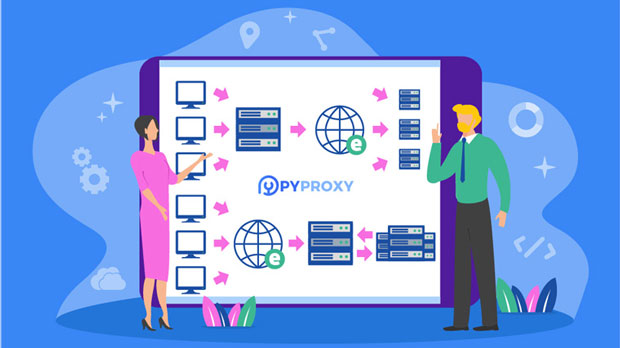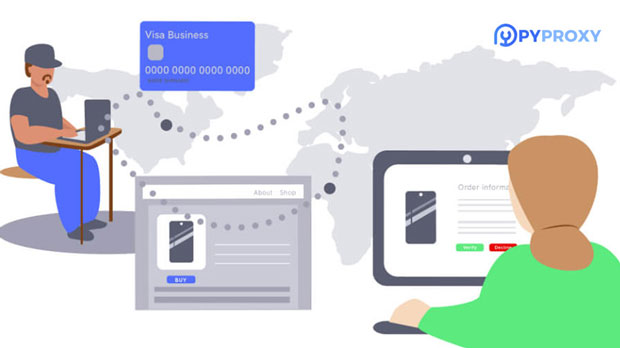Residential socks5 proxies are increasingly becoming a popular choice for those seeking anonymity and security while browsing the internet. They provide several benefits over other types of proxies, particularly in terms of privacy, speed, and bypassing restrictions. But are they worth using? In this article, we will explore the advantages of Residential Socks5 proxies, examining their core features, how they compare to other proxy types, and whether they are a worthwhile investment for individuals and businesses. Introduction to Residential Socks5 ProxiesResidential Socks5 proxies are special types of proxy servers that route your internet traffic through real residential IP addresses. Unlike data center proxies, which are generated from servers, Residential Socks5 proxies are provided by Internet Service Providers (ISPs), making them appear as regular residential users browsing the internet. This helps users mask their real location and identity more effectively than traditional proxies.Socks5 is a highly flexible and secure protocol that supports various types of internet traffic, including HTTP, FTP, and even peer-to-peer file sharing. Residential Socks5 proxies, therefore, provide better performance, security, and anonymity than many other types of proxies. But is this investment truly worth it? Let’s dive deeper into the advantages and whether Residential Socks5 proxies should be part of your internet strategy.1. Enhanced Privacy and AnonymityThe primary reason many individuals and businesses choose Residential Socks5 proxies is for the level of privacy and anonymity they offer. Since these proxies route your traffic through real residential IPs, they are much harder to detect than data center proxies, which are often flagged by websites and services. With Residential Socks5, your internet traffic appears as if it’s originating from a regular home user, providing a higher level of concealment for your identity.This makes Residential Socks5 proxies particularly useful for activities like web scraping, accessing geo-restricted content, and avoiding surveillance. By disguising your true location and identity, you can navigate the internet without the fear of being tracked or identified. Whether you're engaging in market research, protecting your personal information, or evading censorship, Residential Socks5 proxies give you the online anonymity you need.2. Bypassing Geographical RestrictionsAnother significant advantage of Residential Socks5 proxies is their ability to bypass geographical restrictions and censorship. Many websites and streaming services restrict access based on the geographical location of the user. Using Residential Socks5 proxies, users can connect to servers in different regions and access content that is typically unavailable in their area.For businesses, this is especially valuable when it comes to accessing region-specific data or monitoring competitors in different countries. For individuals, Residential Socks5 proxies make it possible to access restricted content such as streaming services, news, and social media platforms that may be blocked in certain regions. By masking your real IP address and making it appear as though you’re browsing from a different country, these proxies help users access the global internet without borders.3. Better Speed and ReliabilityWhen comparing Residential Socks5 proxies to other types of proxies, speed and reliability are often highlighted as their key advantages. residential proxies are often faster and more stable than data center proxies, which can be slow or unreliable due to their shared nature. Residential IPs are allocated to single homes or users, reducing the chances of network congestion and enhancing overall performance.This means that for tasks like streaming, gaming, or conducting high-volume web scraping, Residential Socks5 proxies provide a more stable connection with fewer interruptions. Additionally, since Residential Socks5 proxies are less likely to be flagged or blacklisted, they offer a more consistent experience when accessing a variety of websites and services.4. Reduced Risk of IP BansOne of the major challenges faced by users of traditional proxies is the risk of IP bans. Websites and services often monitor IP addresses to detect suspicious or malicious activities, leading to temporary or permanent bans for users with flagged IP addresses. Data center proxies are particularly vulnerable to this, as they are often recognized as proxies by websites.In contrast, Residential Socks5 proxies have a lower risk of being banned. Since they use real residential IPs, they appear as legitimate home users, which makes them less likely to be flagged by websites. This is particularly important for businesses involved in activities like web scraping, account management, and social media automation, where frequent access to a website from multiple IP addresses may be required without being blocked.5. Ideal for Web Scraping and AutomationResidential Socks5 proxies are also widely used for web scraping and automation tasks. These activities often require numerous IP addresses to avoid triggering rate limits, CAPTCHAs, or IP bans. Residential Socks5 proxies can be an excellent solution to these challenges since they allow users to access large volumes of data from websites without facing restrictions.Because Residential Socks5 proxies make it appear as though multiple users are accessing the site from different geographical locations, they can effectively avoid throttling and bypass security measures such as CAPTCHA verification. This makes them a powerful tool for businesses conducting market research, monitoring online trends, or gathering competitor data.6. Cost-Effectiveness for Long-Term UseWhile Residential Socks5 proxies can be more expensive than other proxy types like data center proxies, they offer significant cost advantages in the long term. The enhanced privacy, security, and reliability they offer can save businesses and individuals from costly issues such as IP bans, service downtime, or slow internet speeds. Additionally, the ability to automate tasks such as web scraping and data gathering can improve operational efficiency, ultimately leading to cost savings.For businesses that require regular access to different websites or services, Residential Socks5 proxies provide a scalable and efficient solution. While the initial investment may be higher, the increased efficiency and ability to avoid interruptions can make them a worthwhile option for businesses operating in data-intensive industries.7. Use Cases and Practical ApplicationsResidential Socks5 proxies have a wide range of practical applications. They can be used for:- Market Research: Collecting data from various websites without getting blocked.- SEO Monitoring: Tracking website rankings from different locations.- Social Media Automation: Managing multiple accounts on platforms like Facebook, Instagram, and Twitter.- Price Monitoring: Keeping track of competitors' pricing strategies.- Online Security: Protecting your personal information when browsing online or engaging in e-commerce.These are just a few examples of how Residential Socks5 proxies can be utilized for different purposes. Their versatility and robust features make them suitable for businesses and individuals who value privacy, efficiency, and freedom when navigating the internet.Conclusion: Is it Worth Using Residential Socks5 Proxies?In conclusion, Residential Socks5 proxies offer numerous advantages in terms of privacy, security, speed, and bypassing geographical restrictions. They provide enhanced anonymity, reduce the risk of IP bans, and offer better performance for tasks like web scraping and automation. For businesses and individuals looking to maintain their online privacy, access restricted content, or streamline their internet activities, Residential Socks5 proxies are a valuable tool.While they may be more expensive than data center proxies, their long-term benefits, including reliability and reduced downtime, make them a worthwhile investment. If privacy, security, and performance are important to you, Residential Socks5 proxies are undoubtedly worth considering.
Jan 14, 2025
![arrow]()



























































